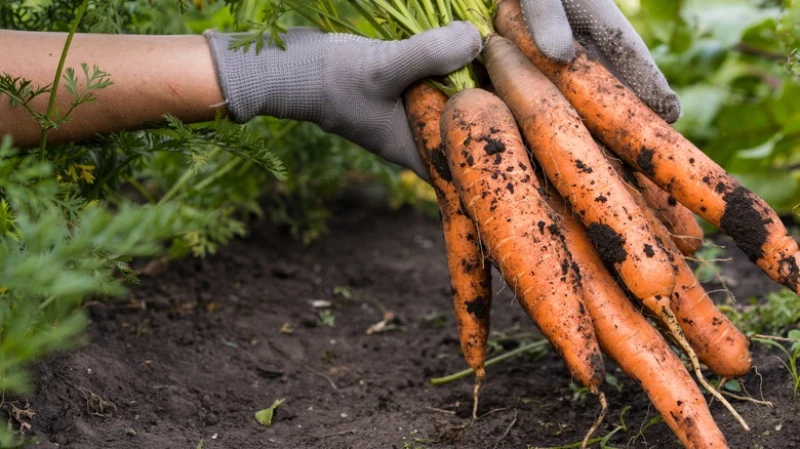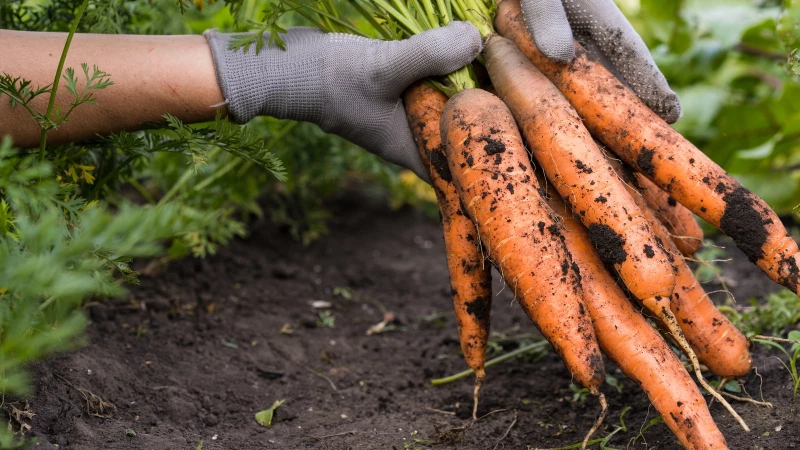Carrots, scientifically known as Daucus carota var. sativa, belong to the Apiaceae family and are typically grown for their sweet and vibrant roots. Originating from Central Asia, carrots are packed with carotenoids, vitamins, and minerals, making them a popular dietary choice globally. Whether cultivated in containers or directly in the ground, these biennial plants are favored by both novice and seasoned gardeners. While carrots are relatively low-maintenance, TikTok advises that the key to thriving carrots lies in selecting the right soil - opting for light, well-draining soil ensures optimal conditions for cultivating flawless carrots.
The Importance of Light and Airy Soil for Carrots

Carrots require a loose soil structure so the root can easily and efficiently push through. In compacted soil, the carrot may become forked, stunted, or unable to reach its full length. A loose, well-aerated structure will allow water to disperse evenly, accessing the carrot crop and preventing waterlogging. Sandy and silt loam soils are the best options for growing carrots. If your garden has heavy clay, consider planting your carrots in containers or starting a raised bed garden. There are also shorter cultivars, such as Daucus carota 'Chantenay,' that are suited to heavy soils.
Alongside choosing the right soil, carrots require a regular watering schedule for optimum growth. Drought can decrease the yield and cause the plant to become stressed and more susceptible to infection. In water-saturated conditions, the taproot may become stunted, discolored, or develop root rot. Note that it is important not to over-fertilize your carrot crop, as too much nitrogen can produce forked carrots. Growing your carrots in well-draining soil and providing consistent moisture will ensure the best environment for a successful harvest.
Step-by-Step Guide: Growing Carrots from Seed
Carrots are best grown from seeds rather than seedlings. Here is a step-by-step guide to help you grow perfect carrots:
- Wait for spring when the soil temperature reaches 40 degrees Fahrenheit to sow carrot seeds directly in the garden.
- If planting in the garden, space out rows 12 to 18 inches apart and plant seeds ¼ inch deep.
- For container planting, choose a pot that is at least 10 inches deep to allow room for the roots to grow.
- Fill the container with soil, scatter the seeds on the surface, and cover them lightly with soil or sand.
- Consider covering the surface of the container with a sheet of cardboard to protect seeds during heavy rain and maintain moisture.
- Check under the cardboard daily and remove it once the seeds start to sprout.
If you want to grow carrots successfully, make sure to plant them in full sun and keep the soil consistently moist. The seedlings typically emerge within 14 to 21 days when the temperature ranges between 55 and 65 degrees Fahrenheit. Once the small, grass-like seedlings have developed 2 to 3 true leaves or are large enough to handle, thin them out to achieve a final spacing of around 1 to 3 inches between each seedling. Depending on the specific growing conditions and cultivar, the roots may take anywhere from 70 to 120 days before they are ready for harvest.







